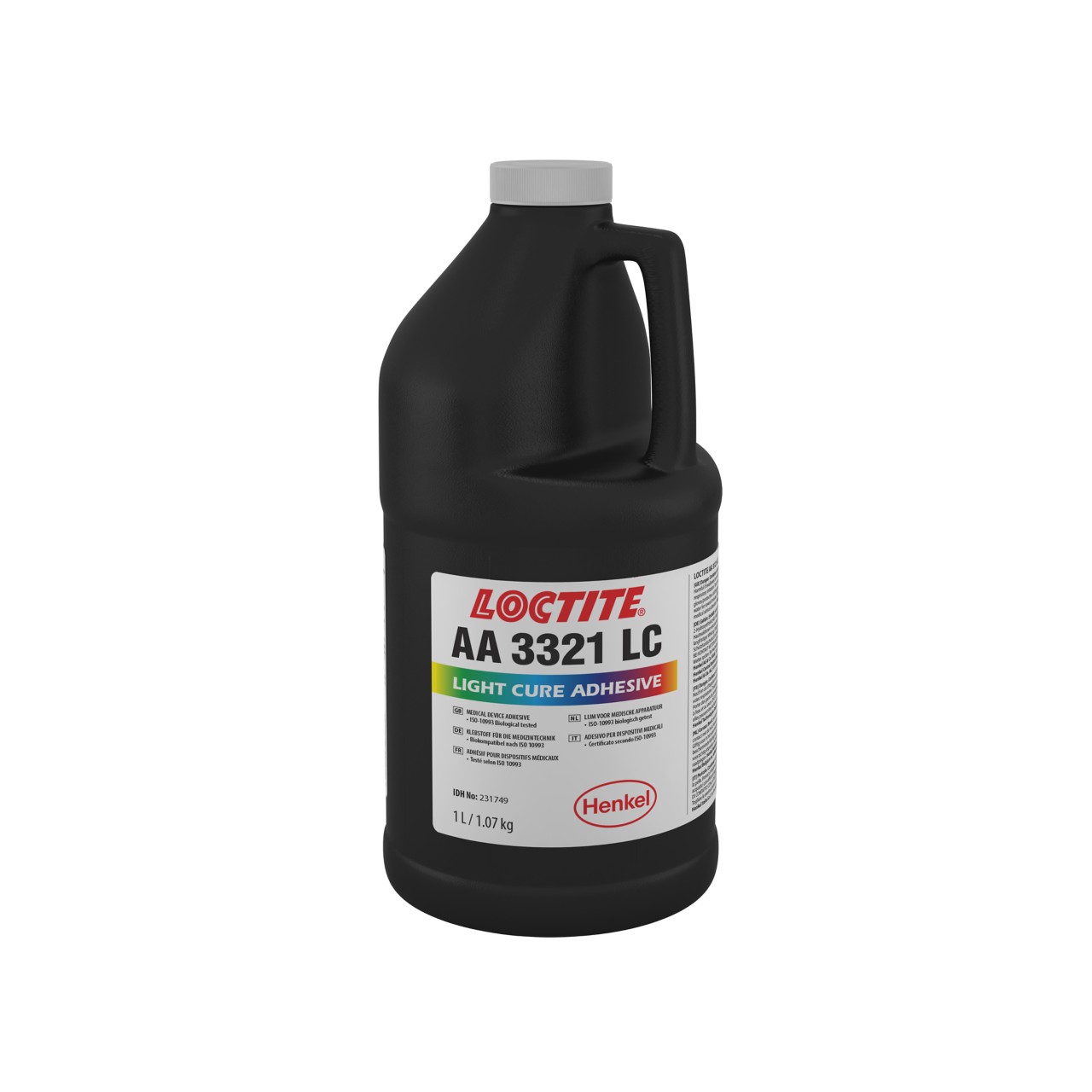LOCTITE AA 3321
- Flexible bond
- Highly thixotropic
- Excellent adhesion to glass, plastics and metals
Product Description
LOCTITE® AA 3321 is primarily designed for bonding rigid or flexible PVC to polycarbonate where large gap-filling capabilities and flexible joints are desired. The product has shown excellent adhesion to a wide variety of substrates including glass, many plastics and most metals. The thixotropic nature of LOCTITE® AA 3321™ reduces the migration of liquid products after application to the substrate.
LOCTITE® AA 3321 is a transparent, light yellow, light-cured, universal, acrylic-based instant adhesive, suitable for metals and stress-sensitive plastics with a high, on-demand, curing speed. It passes the ISO-10993 test protocol.
LOCTITE® AA 3321 can be cured by exposure to UV and/or visible light of sufficient intensity. To obtain full cure on surfaces exposed to air, radiation @ 220 to 260 nm is also required. The speed of cure will depend upon the UV intensity and spectral distribution of the light source, the exposure time and the light transmittance of the substrates.
Fixture Time
Fixture time is defined as the time to develop a shear strength of 0.1 N/mm².
UV Fixture Time, Glass microscope slides, seconds:
- Black light, Zeta® 7500 light source:
- 6 mW/cm², measured @ 365 nm ≤15LMS
Technical Specifications
| General Properties | |
| Refractive index Refractive index The refractive index determines how much the path of light is bent, or refracted, when entering a material. It is calculated by taking into account the velocity of light in vacuum compared to the velocity of light in the material. The refractive index calculation can be affected by the wavelength of light and the temperature of the material. Even though it is usually reported on standard wavelengths it is advised to check the TDS for the precise test parameters. | 1.48 |
| Specific Gravity Specific Gravity Specific gravity (SG) is the ratio of the density of a substance to the density of a reference substance; equivalently, it is the ratio of the mass of a substance to the mass of a reference substance for the same given volume. For liquids, the reference substance is almost always water (1), while for gases, it is air (1.18) at room temperature. Specific gravity is unitless. | 1.08 |
| Mechanical Properties | |
| Elongation Elongation Elongation is the process of lengthening something. It is a percentage that measures the initial, unstressed, length compared to the length of the material right before it breaks. It is commonly referred to as Ultimate Elongation or Tensile Elongation at break. | 250 % |
| Physical Properties | |
| Viscosity Viscosity Viscosity is a measurement of a fluid’s resistance to flow. Viscosity is commonly measured in centiPoise (cP). One cP is defined as the viscosity of water and all other viscosities are derived from this base. MPa is another common unit with a 1:1 conversion to cP. A product like honey would have a much higher viscosity -around 10,000 cPs- compared to water. As a result, honey would flow much slower out of a tipped glass than water would. The viscosity of a material can be decreased with an increase in temperature in order to better suit an application | 5000 mPa.s |



